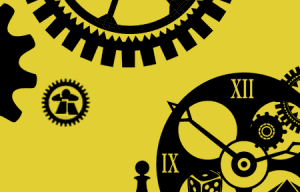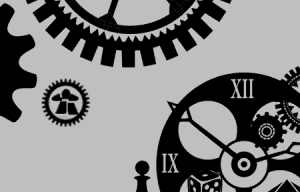The League of Gamemakers was formed in part as a collaboration between Kickstarter creators, so this series is a fitting part of that spirit of collaboration and sharing of best practices.
We’ve found the crowdfunding community is uniquely unified in support for each other, and yet not everyone does it the same way. We thought it might be interesting to ask the same questions of a variety of successfully project creators and compare the answers. So we present to you our first set of answers from Jamey Stegmaier:
7 KICKSTARTER QUESTIONS
WHAT ARE THE MOST COST EFFECTIVE ADVERT OUTLETS YOU’VE FOUND TO DRIVE FOLKS TO YOUR CAMPAIGN?
By far the most cost-effective advertising outlet I’ve found is to offer other people value at every opportunity I have. This might mean interviewing on a blog or podcast I love (and not interviewing to promote my project, but to engage that particular audience with the types of things they’re interested in), talking about random games and game design on BGG, or creating content of my own that helps people. Honestly, I don’t do anything to promote my campaigns. Rather, I try to find a way to help people, make people laugh, or talk with people about the things they’re interested in, and if they like the look of my games, that’s great. The only cost to me to do this is my time.
NAME YOUR FAVORITE WAY TO ENGAGE BACKERS.
Any way that directly engages backers is my favorite, especially if it’s in public. I get tons of e-mails during and after Kickstarter campaigns, and I answer all of them, but I’m the happiest when those questions are posted on the Kickstarter project or update, because then both the question and the answer might help more than just that one backer.
WHEN DO YOU KNOW YOUR GAME IS READY FOR KICKSTARTER?
When it’s been through significant playtesting and blind playtest, when I know that we can actually make the game (in term of components and budget), and when I have enough of the art and design incorporate that it looks presentable. I don’t want to present a 100% finished game on Kickstarter—rather, I want a little bit of breathing room and flexibility to make the game extra special based on backer feedback. So for me, that means the game is about 95% complete on launch day.
WHAT IS YOUR ACTION PLAN FOR AFTER A CAMPAIGN ENDS?
Get the game ready for printing as soon as possible so we can meet our promised delivery date. Of course, if something came up during the campaign that revealed issues that needed further playtesting, we would do that before sending the game to the printer. Also, I like to find out exactly where backers live soon after the project ends so I can start coordinating with my shipping company to get the game to backers as quickly and cost-effectively as possible.
WHAT IS SOMETHING YOU WOULD DO DIFFERENTLY ON YOUR NEXT CAMPAIGN?
For Tuscany, the major change is that there are no true exclusives. There are elements that will be more scarce than others, but every element of the project will be available in some form after the campaign. I’m going to be completely transparent about that during the campaign so there aren’t any misconceptions about what we’re promising. However, I can say that the value we’re offering is off the charts, especially if we hit certain stretch goals.
WHAT 3 TIPS WOULD YOU GIVE A NEW PROJECT CREATOR?
Wow, only 3? That’s tough. Let’s go with this:
1) Go back 5 Kickstarter projects right now, even if it’s just for $1. Study every aspect of those projects and read every update. Take updates on what you like and don’t like about them, and pay attention to how other backers respond to the decisions those project creators make. Participate in the comments. You’ll learn so much about how to run a Kickstarter campaign by approaching a few campaigns from that perspective.
2) Start writing your own blog or start recording your own podcast. Create content that engages other people, and you’ll learn so much about connecting with people online. It may not result in a rabid fan base, but the learning experience is worth it.
3) Read every Kickstarter Lesson on my blog and listen to every episode of Richard Bliss’ Funding the Dream podcast. These are free resources that will tell you everything you need to know about running a successful Kickstarter campaign.
WHAT’S KICKING AROUND IN 2014?
Well, the big thing is the Kickstarter campaign for the Viticulture expansion pack, Tuscany. After that I’m hoping to run a smaller Kickstarter just for special resources to use in a variety of games—that’s not something I thought I’d ever do, but I’ve fallen in love with the tangible aspect of gaming, and I want to share that with more people. I’m going to a few conventions in 2014—Geekway to the West in St. Louis, Gen Con, and most likely BGG.con and GrandCon. I’m also working on one other game design that I’m really excited about, but it’s a little too early to go into any details.
1 BONUS QUESTION, JUST FOR FUN
IF ALL OF THE BGG TOP 100 GAMES WERE SUDDENLY KICKSTARTING EXPANSIONS, WHICH ONE WOULD YOU BACK FIRST?
I love this question. I can’t limit it to just one.
I’d have to say either Terra Mystica or Risk Legacy. I suspect Terra Mystica will have an expansion at some point for more races. Unfortunately I think Risk Legacy is done, but at least Rob Daviau is further exploring the legacy mechanism in Seafall.
—
Jamey Stegmaier is a successful designer and indie publisher – part of the dynamic duo at Stonemaier Games – with a few critically acclaimed and popular Kickstarter projects funded, including Viticulture, Euphoria, and currently the expansion pack to Viticulture, Tuscany. He’s also the author of a blog with a big focus on Kickstarter Lessons, and gives back generously to the community of crowdfunding. We’re so pleased he was able to kick off our KS Questions and appreciate his time.
—
If you have crowdfunded a successful campaign and would like to participate in our KS Questions, send us an email! – we’d love to hear and publish your answers and tips.








